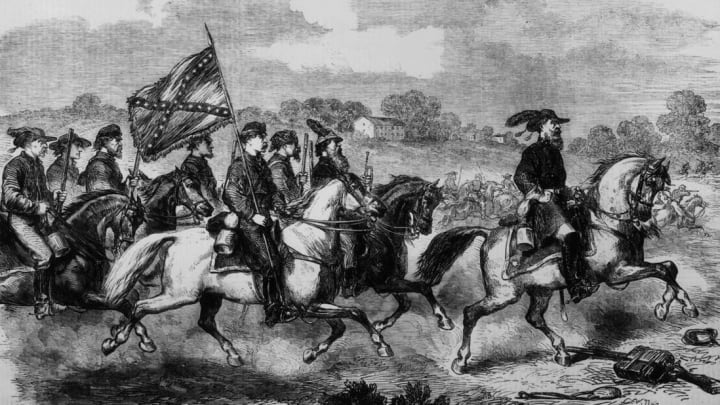In the years leading up to the Civil War, many Northerners and Southerners alike wanted the federal government to take a more aggressive approach toward acquiring new territory. In fact, some private citizens, known as filibusters, took matters into their own hands. They raised small armies illegally; ventured into Mexico, Cuba, and South America; and attempted to seize control of the lands. One particularly successful filibuster, William Walker, actually made himself president of Nicaragua and ruled from 1856 to 1857.
For the most part, these filibusters were just men in search of adventure. Others, however, were Southern imperialists who wanted to conquer new territories in the tropics. Abolitionist factions in the North greatly opposed their efforts, and the debate over Southern expansion only increased tensions in a divided nation. As the country drifted into war, U.S. Vice President John Breckinridge of Kentucky warned that "the Southern states cannot afford to be shut off from all possibility of expansion towards the tropics by the hostile action of the federal government."
But Abraham Lincoln's election in November 1860 put an end to the argument. The anti-slavery president refused to compromise on the issue, and war broke out in April 1861.
CONFEDERATE COLONIES, SOUTH OF THE BORDER
Winning the war was clearly a higher priority for the Confederacy than conquering Latin America, but growth was certainly on the post-war agenda. The Confederate constitution included the right to expand, and Confederacy president Jefferson Davis filled his cabinet with men who thought similarly. He even hinted that the slave trade could be revived in "new acquisitions to be made south of the Rio Grande."
During the Civil War, Confederate agents attempted to destabilize Mexico so that its territories would be easy to snatch up after the war. One rebel emissary to Mexico City, John T. Pickett, secretly fomented rebellion in several Mexican provinces with an eye to "the permanent possession of that beautiful country." Pickett's mission ended in failure in 1861, but fate dealt the South a better hand in 1863. French Emperor Napoleon III seized Mexico, and the move provided the South with a perfect excuse to "liberate" the country after the Civil War.
Of course, Mexico was just part of the pie that the South hoped to inherit. Confederate leaders also had their eyes squarely on Brazil—a country of 3 million square miles and more than 8 million people. Prior to the outbreak of the war, Matthew Maury, one of the forces behind the U.S. Naval Academy, dispatched two Navy officers to the Amazon basin, ostensibly to map the river for shipping. Instead, they were secretly plotting domination and collecting data about separatist movements in the region. When the South lost the war, Maury refused to abandon his plans. He helped up to 20,000 ex-rebels flee to Brazil, where they established the Confederate colonies of New Texas and Americana. To this day, hundreds of descendants of the Confederados still gather outside Americana to celebrate their shared heritage of rocking chairs and sweet potato pie. In a strange way, a part of the Old South still survives—thousands of miles below the U.S. border.
